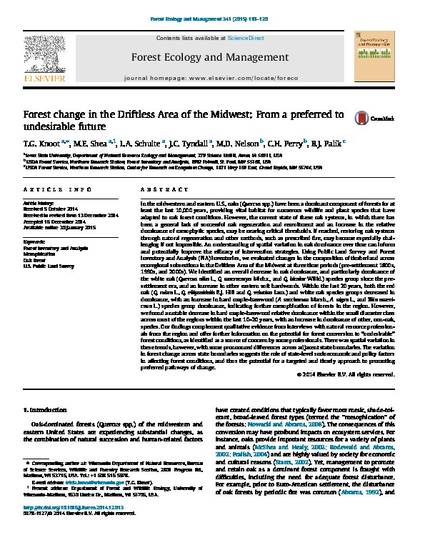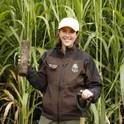
In the midwestern and eastern U.S., oaks (Quercus spp.) have been a dominant component of forests for at least the last 10,000 years, providing vital habitat for numerous wildlife and plant species that have adapted to oak forest conditions. However, the current state of these oak systems, in which there has been a general lack of successful oak regeneration and recruitment and an increase in the relative dominance of mesophytic species, may be nearing critical thresholds. If reached, restoring oak systems through natural regeneration and other methods, such as prescribed fire, may become especially challenging if not impossible. An understanding of spatial variation in oak dominance over time can inform and potentially improve the efficacy of intervention strategies. Using Public Land Survey and Forest Inventory and Analysis (FIA) inventories, we evaluated changes in the composition of timberland across ecoregional subsections in the Driftless Area of the Midwest at three time periods (pre-settlement 1800s, 1990s, and 2000s). We identified an overall decrease in oak dominance, and particularly dominance of the white oak (Quercus alba L., Q. macrocarpa Michx., and Q. bicolor Willd.) species group since the presettlement era, and an increase in other eastern soft hardwoods. Within the last 20 years, both the red oak (Q. rubra L., Q. ellipsoidalis E.J. Hill and Q. velutina Lam.) and white oak species groups decreased in dominance, with an increase in hard maple-basswood (A. saccharum Marsh., A. nigra L., and Tilia americana L.) species group dominance, indicating further mesophication of forests in the region. However, we found a notable decrease in hard maple-basswood relative dominance within the small diameter class across most of the regions within the last 10–20 years, with an increase in dominance of other, non-oak, species. Our findings complement qualitative evidence from interviews with natural resource professionals from the region and offer further information on the potential for forest conversion to ‘‘undesirable’’ forest conditions, as identified as a source of concern by some professionals. There was spatial variation in these trends, however, with some pronounced differences across adjacent state boundaries. The variation in forest change across state boundaries suggests the role of state-level socioeconomic and policy factors in affecting forest conditions, and thus the potential for a targeted and timely approach to promoting preferred pathways of change.
Available at: http://works.bepress.com/lisa_schulte/29/

This article is from Forest Ecology and Management 341 (2015): 110, doi:10.1016/j.foreco.2014.12.013.